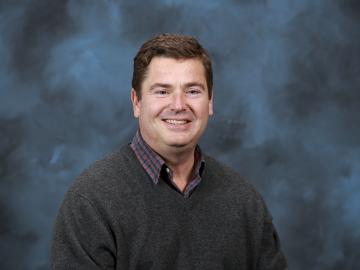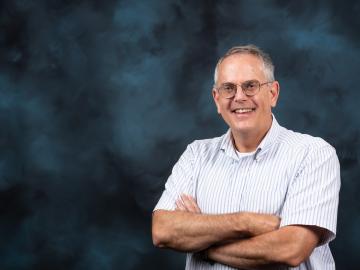
Filter News
Area of Research
- Advanced Manufacturing (5)
- Biology and Environment (54)
- Computer Science (4)
- Electricity and Smart Grid (1)
- Energy Frontier Research Centers (1)
- Energy Science (87)
- Fuel Cycle Science and Technology (1)
- Fusion and Fission (34)
- Fusion Energy (5)
- Isotope Development and Production (1)
- Isotopes (5)
- Materials (90)
- Materials Characterization (1)
- Materials for Computing (12)
- Materials Under Extremes (1)
- National Security (24)
- Neutron Science (30)
- Nuclear Science and Technology (25)
- Quantum information Science (5)
- Supercomputing (65)
News Type
News Topics
- (-) Big Data (58)
- (-) Biotechnology (36)
- (-) Grid (50)
- (-) Machine Learning (53)
- (-) Materials Science (120)
- (-) Mercury (9)
- (-) Nanotechnology (50)
- (-) Nuclear Energy (99)
- (-) Quantum Science (80)
- 3-D Printing/Advanced Manufacturing (108)
- Advanced Reactors (25)
- Artificial Intelligence (114)
- Bioenergy (95)
- Biology (108)
- Biomedical (61)
- Buildings (50)
- Chemical Sciences (72)
- Clean Water (19)
- Composites (24)
- Computer Science (180)
- Coronavirus (37)
- Critical Materials (17)
- Cybersecurity (31)
- Education (5)
- Element Discovery (1)
- Emergency (3)
- Energy Storage (80)
- Environment (162)
- Exascale Computing (64)
- Fossil Energy (7)
- Frontier (61)
- Fusion (56)
- High-Performance Computing (114)
- Hydropower (6)
- Isotopes (55)
- ITER (6)
- Materials (113)
- Mathematics (9)
- Microelectronics (4)
- Microscopy (44)
- Molten Salt (5)
- National Security (81)
- Neutron Science (139)
- Partnerships (67)
- Physics (65)
- Polymers (25)
- Quantum Computing (48)
- Security (30)
- Simulation (54)
- Software (1)
- Space Exploration (16)
- Statistics (3)
- Summit (62)
- Transportation (61)
Media Contacts

East Tennessee occupies a special place in nuclear history. In 1943, the world’s first continuously operating reactor began operating on land that would become ORNL.

As ORNL’s fuel properties technical lead for the U.S. Department of Energy’s Co-Optimization of Fuel and Engines, or Co-Optima, initiative, Jim Szybist has been on a quest for the past few years to identify the most significant indicators for predicting how a fuel will perform in engines designed for light-duty vehicles such as passenger cars and pickup trucks.

From soda bottles to car bumpers to piping, electronics, and packaging, plastics have become a ubiquitous part of our lives.

Six ORNL scientists have been elected as fellows to the American Association for the Advancement of Science, or AAAS.

The annual Director's Awards recognized four individuals and teams including awards for leadership in quantum simulation development and application on high-performance computing platforms, and revolutionary advancements in the area of microbial

David Kropaczek, director of the Consortium for Advanced Simulation of Light Water Reactors, or CASL, at the Department of Energy’s Oak Ridge National Laboratory, has been named a fellow of the American Nuclear Society.

Seven ORNL scientists have been named among the 2020 Highly Cited Researchers list, according to Clarivate, a data analytics firm that specializes in scientific and academic research.

A multi-institutional team, led by a group of investigators at Oak Ridge National Laboratory, has been studying various SARS-CoV-2 protein targets, including the virus’s main protease. The feat has earned the team a finalist nomination for the Association of Computing Machinery, or ACM, Gordon Bell Special Prize for High Performance Computing-Based COVID-19 Research.

Chuck Kessel was still in high school when he saw a scientist hold up a tiny vial of water and say, “This could fuel a house for a whole year.”

ORNL has added 10 virtual tours to its campus map, each with multiple views to show floor plans, rotating dollhouse views and 360-degree navigation. As a user travels through a map, pop-out informational windows deliver facts, videos, graphics and links to other related content.


